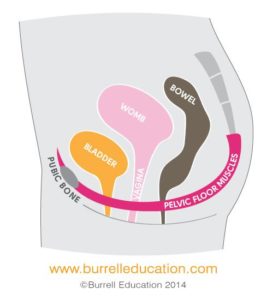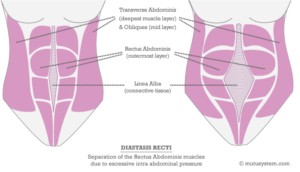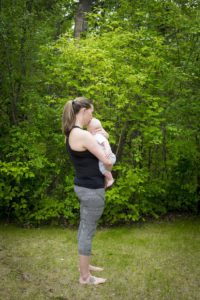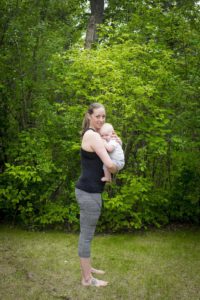By Kaye Burrows
Feature image, courtesy of Treva London Photography.
You’ve had a baby (or babies) and want to return to exercise or ramp up your routine. Here are some things to expect!
1) Things will be different:
Whether your first or fourth birth, your body has undergone major changes and adaptations during pregnancy to grow, nurture and support the development of your little one(s). Some of the changes that occur in pregnancy are a change in blood volume, change in centre of gravity, shift in alignment, hormone changes and weight gain to prepare for postpartum feeding and healing. On top of all of this, you birthed the baby through a vaginal or C-section birth. No matter how babies come into the world, the process is intense and requires stretching, tearing, incisions or all three!
 The pelvic floor supports major structure in the pelvic region and needs time to heal after pregnancy and birth.
The pelvic floor supports major structure in the pelvic region and needs time to heal after pregnancy and birth.
If you feel different in your body, it is because your body is different. Totally normal and totally ok. The most important thing to do at this point is understand that you aren’t going “back” to a pre-baby body but forward into your postpartum body. Embrace this amazing body that has done so much for you and your family. With some intentional effort, you can become happy in your postpartum body.
2) Patience Patience Patience
Working through a smart program that strengthens your core and pelvic floor will be invaluable for you in the long run. It may feel like you are taking things slowly, but it will be worth it to ensure that you return to exercise without developing issues such as incontinence, prolapse, diatasis recti and pelvic/low back pain.

Certain exercises, breathing strategies and alignment can lead to more pressure in the abdominal area, preventing diastasis recti from healing and leading to a “pouchy tummy” long past pregnancy.
In the early months, or if you have symptoms such as a doming belly, leaking urine, persistent lower back or pelvic pain, the average boot camp or online workout isn’t going to be a good fit for your body. For now, avoid exercises such as sit-ups, crunches, push-ups, planks, burpees, jumping and running as you heal and reconnect with your core and pelvic floor. These exercises often increase the pressure on your core and pelvic floor which is demanding on these tissues that are healing. Instead, focus on heel drops, glute bridges, squats and alignment throughout the day.


3) See an expert
While your doctor is an expert in babies, birth and c-sections, they likely have little training in pelvic floor and core strengthening during exercise. Women are often cleared at 6-weeks for exercise without any instructions as to how they can do that safely and effectively. A pelvic health physiotherapist can help you reconnect with your core and pelvic floor and avoid or solve pain and other pelvic problems. Two clinics that I love in Edmonton are Cura Physical Therapies and Nuture Her.
Same goes for exercise instructors and personal trainers. Most of us were given minimal training in postnatal bodies unless we have chosen to specialize. There are a few amazing options in Edmonton and throughout Alberta. Don’t be afraid to ask your trainer what they know about postpartum and how they can help you to heal and strengthen.
Kaye is am a mom of three & owner at Core Love Fitness. She has a Bachelors of Physical Education and Bachelors of Education. She has taken pre and post natal, core restoration and pelvic floor specialization courses through the MuTu® System, Burrel Education, Hypopressives Canada, Fit 4 Two and Julie Weibe, PT. As an athlete (CIS University Hockey) and lover of movement, she is passionate about helping women feel good, strong and healthy. www.corelove.ca, FB: Core Love Fitness, IG: Core Love Fitness
